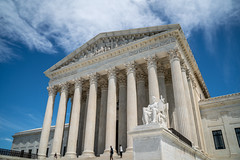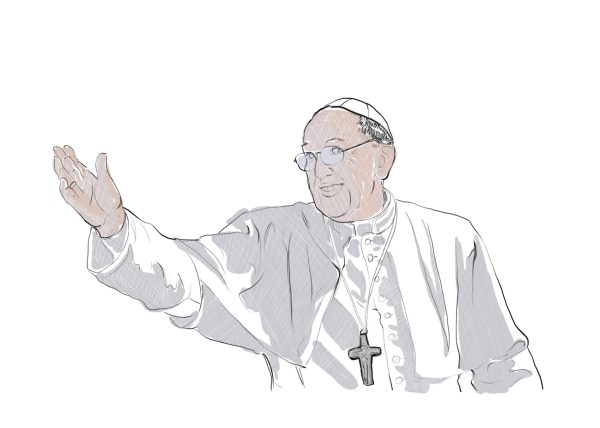Supreme Court Term Gets Underway
Read all about some of the important cases the justices are hearing and their potential ramifications for the country.

The Supreme Court of the United States. (“SCOTUS” (CC BY 2.0))
The Supreme Court’s term is off to a busy start, as the highest court in the U.S. takes on many contested cases which could have significant implications for the country. After an unprecedented session which included the controversial decision to overturn Roe v. Wade, which for decades guaranteed a woman’s right to choose to get an abortion, the conservative-leaning Court has taken on another batch of high-profile cases involving affirmative action, voting and redistricting, and LGBTQ+ rights. The court also has a new member, Justice Ketanji Brown Jackson, appointed by President Biden. Here’s a breakdown of some of the most-watched cases.
Perhaps the most anticipated decision of the year will be in the case Students for Fair Admissions v. President and Fellows of Harvard College, which deals with the issue of affirmative action. Students for Fair Admissions is arguing that Harvard University has been discriminating against Asian applicants. The organization is challenging the decision made in a 2003 case against the University of Michigan, where the Supreme Court decided that there could be a holistic review of applicants, including race, with the rule that there be no quotas or a fixed share of admitted students of a particular race. Students for Fair Admissions is arguing that the 2003 decision is in violation of the 14th Amendment, and should be overruled. In addition to this case, Students for Fair Admissions is also suing the University of North Carolina in Students for Fair Admissions v. University of North Carolina (UNC). Like Harvard, UNC is attempting to defend its admissions process. After the hearings, the court appears to be poised to overturn the 2003 ruling – and, by extension, affirmative action – in some form. However, how far the court may go in rolling back affirmative action remains unknown until the decision is released this summer.
Control over how states handle redistricting also appears to be in the hands of the Court this year, especially in the case Moore v. Harper. The case comes out of North Carolina, a swing state, where the state legislature re-drew the state’s congressional districts in a way that would allow Republicans to win in an estimated 10 out of 14 areas. The North Carolina Supreme Court ruled the map was gerrymandered in favor of Republicans. However, the state legislature took advantage of this ruling to challenge court oversight of redistricting, basing their argument on what’s referred to as the “independent state legislature theory.” This interpretation of the Constitution claims that the longstanding precedent which allows for state judicial oversight of redistricting is prohibited by the Constitution’s Elections Clause, which, some argue, allows state legislatures singular authority over elections.
A powerful message came from the Conference of Chief Justices, representing the top justices in all 50 states’ supreme courts, warning against a potential ruling in favor of the lawmakers. They stated, “State sovereignty includes the power of each state to structure its own government and determine the relationships between the legislative and judicial branches. The independent state legislature theory would represent a Supreme Court–mandated carve-out to each state’s sovereignty — barring state judicial review of any legislative decision relating to congressional elections.” Depending on how it rules, this case could have far-reaching implications for redistricting and voting rights, especially in states where the legislatures seem inclined to limit ballot access.
Another case, 303 Creative LLC v. Elenis, which has to do with LGBTQ+ rights, will also be highly consequential. A Colorado web designer is claiming that the state should not force her to create wedding websites for engaged same-sex couples. If the Supreme Court sides with the web designer, it could have devastating impacts beyond the LGBTQ+ community. In theory, a company would be able to discriminate against and refuse service to any group, including racial and ethnic groups, if that group didn’t align with the beliefs of the individual or corporation. “We had that practice during Jim Crow, I don’t think we want that practice back again,” says David Cole, national legal director for the ACLU.
In summary, this Supreme Court term will be a big one. Beyond these cases, there are many more that are important. The decisions the justices make this year will have lasting impacts for generations to come. Americans will have to wait and see what happens when the rulings are released around July.

At Albuquerque Academy, William Weinstein ‘23 is a beloved member of the community. This will be his first year involved with The Advocate! He is already...






